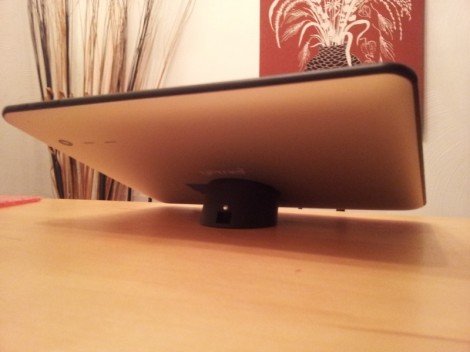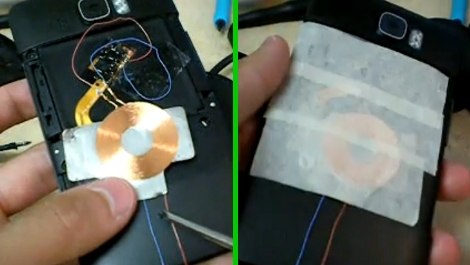
This is a Gemei G9T, a 9.7″ Tablet running Android 4.0. [Carnivore] shows us how to modify it to use inductive charging. The inductive charging hardware is taken from a Palm device (this uses the Touchstone charging hardware seen in several other hacks). It’s easy to interface with the tablet’s electronics, but physically placing the coil and magnets is another story.
The video after the break gives you a full walk-through of the process. He starts by removing the screws and prying the case off of the tablet. From there [Carnivore] shows how to carefully remove the coil, circuit board, shielding, and magnets from a Palm back plate. The magnets are the first to be positioned on the tablet’s back plate. The metal is too thick for them to hold well so he uses a Dremel to grind away just enough material for a strong connection. Unfortunately the metal will shield the magnetic fields the coil needs to work so he cuts a hole in the case the same size as that coil. The area is covered in liquid electrical tape to prevent shorts, and everything is taped in place. Two jumper wires connected from the coil’s circuit board to the 5V charging input are all it takes to finish up the hack.
Continue reading “Adding Inductive Charging To An Android Tablet”















